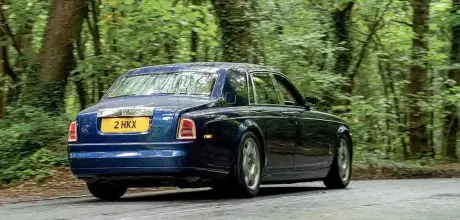Goodwood’s finest – 2003 Rolls-Royce Phantom VII modified for a Duke
This early Phantom VII may be the finest long-journey car money can buy, but it’s also the one its owner has held onto for longer than any other Rolls-Royce or Bentley. An interesting history and unique features only add to the appeal.
WORDS: NIGEL BOOTHMAN
PHOTOS: GREGORY OWAIN
SPECIAL ORDER PHANTOM VII SECURITY & LUXURY COMBINE IN EARLY GOODWOOD CAR
How ridiculous that this car should be 20 years old. It dates from before the era of smartphones, something that seems to have been with us for ages. In 2003, Roger Federer won his first Grand Slam at the age of 22 and broadband internet was a welcome novelty. Around the time in late November that Concorde made its last flight, this car was probably nearing completion. It’s the 20th Rolls- Royce Phantom built (though not registered until 2004) and was thus one of the first of the Goodwood-era Rolls-Royces. Yet in looks and above all in feel, it’s hardly aged at all.
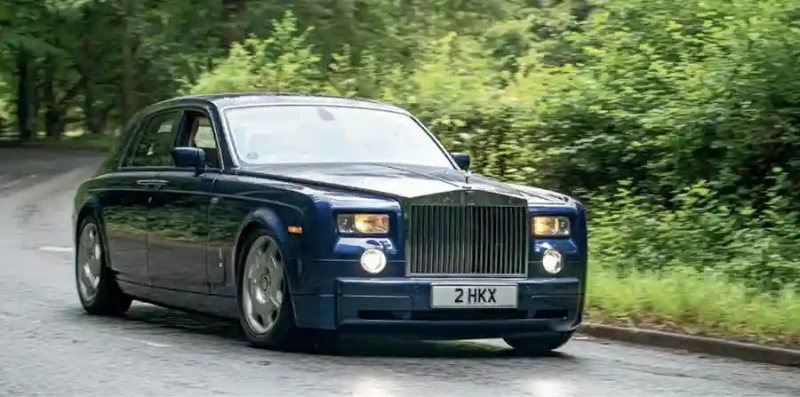
‘It’s still like a new car,’ says Stephen Fabman-Beker. ‘You press the start button and it fires after a nanosecond. It drives exactly as it did when I acquired it more than 13 years ago: perfectly smooth and silent.’ One advantage of being unusually bold with the styling is that it can take a long time to age, if you judge it well. Step outside the pattern other designers follow, and you don’t fade with the fashion. Rolls-Royce has almost always been good at building cars that were slow to date, usually by being deliberately conservative. But that wasn’t the accusation aimed at the BMW-run firm when the first images of the new model were released to the world. Rather the opposite, and there are plenty who were never charmed by the car’s rectilinear form. But in the years since, there are also many of us who have been won round as time has passed, and now admire the Phantom’s imposing presence. When you see how little Rolls-Royce chose to change the basic design for the Phantom VIII (and then only in 2017!) you must acknowledge the original as a success. Simply looking contemporary doesn’t guarantee the car will feel current from the driving seat, but even the first Phantom VII packed in enough cutting-edge features to raise an eyebrow today. Yes, the electric doorclosing button was fun, but it’s what lies beneath that matters more. The monocoque features a twin-layered floor containing various electronic components, sound deadening and sub-woofers for the 14-speaker sound system, while also reducing the ‘hump’ for the propshaft to virtually nothing.
“The car was ordered by Gerald Cavendish Grosvenor, sixth Duke of Westminster, and one of the wealthiest people in the country”
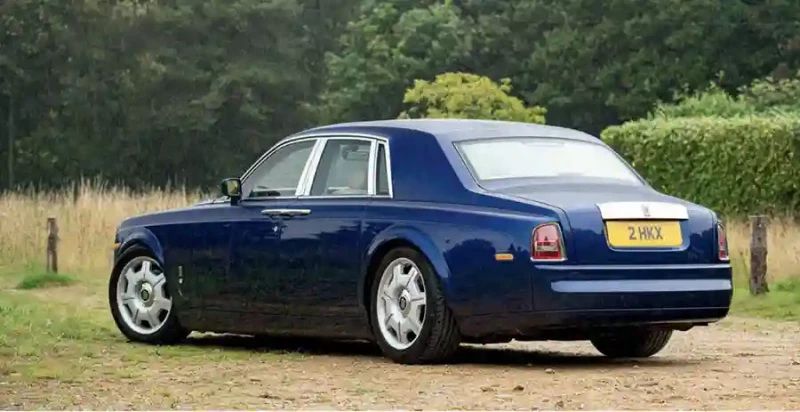
The structure is aluminium and keeps the weight down to 20kg less than an Arnage, despite the Phantom being 18 inches longer, three inches wider and four inches taller. Oh, and sporting a quad-cam V12 rather than a pushrod V8. Stephen’s car will achieve 26 or 27mpg on trips down the French autoroutes, whispering along at 80mph. How? Cylinder deactivation turns the V12 into a V6 once up to speed and allows economy almost double that of Stephen’s other 6.75-litre car. That is a Bentley Continental R, a wonderful and much-loved machine but very much a product of the previous century.
ONE VERY SPECIAL ORDER
So far, what we’ve mentioned has been common to all Phantom VIIs, more correctly known simply as Rolls- Royce Phantoms, in either Series I (2003-2012) or Series II (2012-2017) form. This one, though, is more than a little bit special. The car was ordered by Gerald Cavendish Grosvenor, sixth Duke of Westminster, and one of the wealthiest people in the country. It was the first of three he owned, taking delivery of a second one when this car had been with him a year, then a third after two years, and after the third year this one was moved on to its second owner. It seems to have covered around 10,000 miles a year in the hands of the Grosvenor Group but it was more than a company car, as it features both aesthetic and highly practical quirks that reflect the Duke’s taste and needs. Stephen shows us around. ‘The interior leather is in a shade known as Corn Silk and it’s enhanced with deep navy blue carpets and rugs, and with woodwork that I have not seen on any other Phantom. The veneers have been cut across the grain of the wood rather than on a “drum”, as is usual. The name PHANTOM has been embossed into the leather above the glove box, pressed in with some enormous weight to ensure the indented wording will not ever come out again.
“The fitter informed me that he could not complete the job because the car had a thick bullet-proof plate under the rear seat which he could not drill through”
‘There were many small details I came across over the years, like the button in the headlining. It is quite small and has SOS written on it. I eventually realised this button, when pushed, would make contact with whomever you had set up an agreement with. It could be your personal security man, or the police or a car-tracking company. Speaking of Tracker, the theft preventative people, it was through them that I came across another interesting feature.’ When insuring his car, Stephen discovered there was a requirement for the Phantom to be fitted with a tracking device. There are various places these can be fitted, most obviously in the boot.
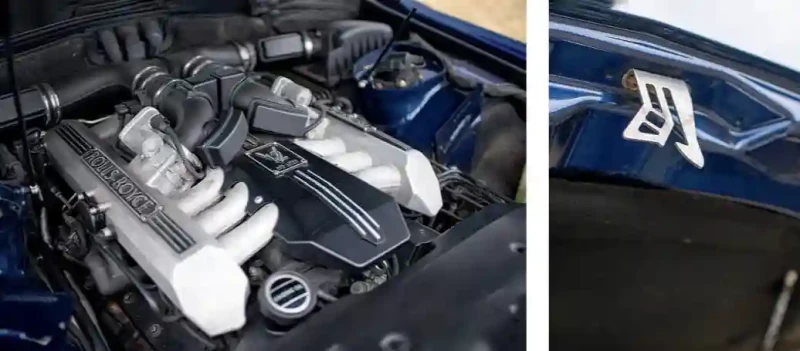
‘On fitting said tracker in the boot,’ says Stephen, ‘the fitter informed me that he could not complete the job because the car had a thick bullet-proof plate under the rear seat which he could not drill through. Also, he said he could not open the rear near-side door from the outside, but he could from the inside. Further investigations confirmed the Duke of Westminster requested this security feature to ensure he or any VIP could not be pulled from the car.’
The under-seat protection was clearly a measure to guard against bomb blasts and it reminds us again of the age of this car. In 2003, people in the Duke’s position in the UK were not only potential subjects for kidnap but as high-profile targets, retained a fear of attack by Irish Republican factions that hadn’t bought into the Good Friday agreement. The world may be still more terrifying today, but history changes the reasons. That one of these features caused some strife for Stephen adds a bit of humour, though he admits to being livid at the time. ‘The bad news for me was that having a door you couldn’t open from the outside was an MOT failure! All you do is operate the handle twice, and it opens, but the technician didn’t know this, and I hadn’t shown him. So instead of the usual pass I had one of those nasty red FAIL sheets. Now, come MOT time, I remind the tester of this unusual anomaly.’
A HISTORY OF FINE CARS
Stephen’s own history with interesting cars goes back to 1995 when he purchased a 1967 Jaguar, the firstof a few leaping cats. Visits to his mother were made all the more enjoyable by having some exciting transportation, as she was quite a lover of fine automobiles. ‘One day she quietly suggested the Jaguar was difficult to get out of with any finesse and she would like me to consider a car that she could slide in and out of with ease,’ recalls Stephen. ‘Never, ever doing anything I was told to do, this suggestion seemed a good one as I had seen a Bentley Mulsanne for sale in a recent Autocar magazine, and to cut a long story short, I purchased it. Mother liked it and so did I.’
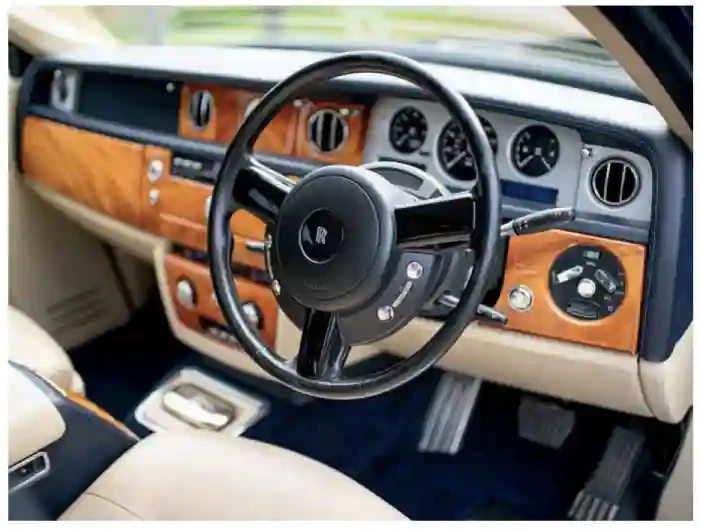
Thus began 23 years and counting of Rolls-Royce and Bentley motoring, and as Stephen puts it, the new and most enjoyable pastures of the Rolls- Royce Enthusiasts’ Club. The RREC became more and more a part of life, as Stephen joined his local South East Section’s Committee, took on the editor’s role after creating the Section Magazine, then became Secretary and finally Chairman. It was in connection with the circle of friends and acquaintances made through the RREC that Stephen acquired this Phantom. ‘In 2009 I had a fixed-head Corniche, and as lovely as it was, I couldn’t get used to the slight offset of the pedals. After 12 Rolls-Royces and Bentleys I knew what I liked, so I mentioned to my friend Richard Hollands, a full-time classic car dealer before he retired, that I was thinking of selling the Corniche and finding a Phantom – which was fatal! Meanwhile, my partner Len and I had just bought a Bentley S-series with the SCT 100 body by James Young, a real favourite of mine. We had a bit of a gathering at home to celebrate with friends from the club and Richard appeared and told me he'd brought my new Phantom.’
Despite Stephen’s sensible observations that he’d just bought another Bentley and hadn’t even begun to market the Corniche, the Royal Blue Phantom made rather an impression. ‘When I first saw the Phantom, I thought I could not have found a more wonderful motor car. The impressive stance was beguiling, the colour was mesmerizing and the interior was the most beautiful leather everywhere. Most Rolls-Royce models also offer these qualities, but the Goodwood Phantom was so different, so modern and so large that I believe all previous Phantom models from P1 to P6 would be flattered to see this modern iteration.’

The colour, by the way, is thought to appear on only four or five other Phantoms. It’s said that a customer saw this car while it was in build, having been painted in this special shade of Royal Blue, and declared that he would have his car that colour as well. Rolls- Royce asked the Duke of Westminster’s permission, which was declined…so future versions of the colour were tinted with a drop of black paint and called Westminster Blue, perhaps as a tribute, perhaps out of mild spite. Stephen advises taking the tale with a pinch of salt, but it’s a good story.
A COSTLY COMPANION?
What has the Phantom been like to live with? They have a reputation for producing frightening bills if anything goes wrong. Stephen reports that the car has been remarkably good and that only two things have cost four-figure sums to sort out, with the more costly being no fault of the Phantom’s.
‘The run-flat tyres it uses were incredibly expensive — £1200 each at one point,’ says Stephen. ‘So Rolls- Royce decided to produce new wheels allowing the fitment of different tyres… the problem being that the old tyres went out of production and the new wheels cost £7000 a set! Add that to the more reasonable new tyres – only £500 each – and it’s a £9000 bill.’
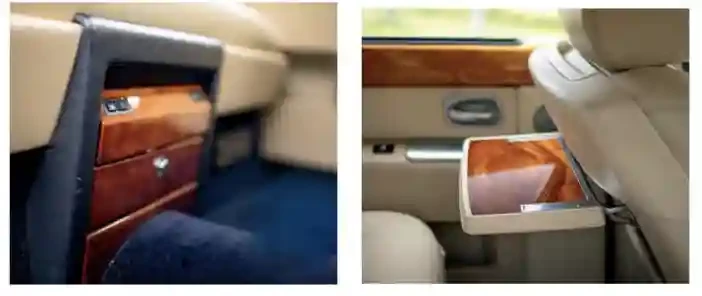
The second issue was with the air suspension, which eventually to become vulnerable to leaks, like all air suspension systems. ‘Nigel Sandell has a young ex-Rolls- Royce apprentice who travelled down to see the car with the computer that talks to all three computers in the Phantom,’ says Stephen. ‘You don’t even need to plug it in – just stand nearby and they connect to each other. Anyway, the young man said he knew exactly what was wrong but the car would need to go up on a ramp to sort it out.’ Away it went to Nigel Sandell’s place in south-west London in a covered transporter and when Stephen rang the next to find out if they’d had a chance to investigate, it was already fixed.
‘The bill was £1700, and I think at least half of that was the transportation. But for an air suspension failure on a car like this – and the first real fault of any note in 13 years – I think that’s pretty good. It’s also a welcome sign of how the cost of ownership on these cars is coming down.’
Stephen points out that he was paying £240 per hour at the Rolls- Royce main dealer he previously used for servicing and MoTs, and that insurance had hovered around the £1200 to £1400 mark for the first ten years. But that dropped suddenly to £450 about 18 months ago, and Stephen believes more and more young apprentices trained by Rolls-Royce on these cars are finding positions with independent marque specialists, where hourly rates are much lower. In other words, the cost of upkeep may have dropped almost as far as the cost of entry: £50,000 buys an early car with higher miles, £70,000- £75,000 brings older but cherished low-milers into play. These cars were around a quarter of a million pounds when new; a 2023 Phantom offers no change from £400,000.
You will have gathered by now that Stephen regards the Phantom as more than capable of living up to the Rolls-Royce name and tradition; the question ‘is it worthy?’ doesn’t even arise. The esteem in which the car is held became apparent when Stephen and Len realised they had to down-size somewhat from a growing collection of vehicles. They decided to retain just one Bentley and one Rolls-Royce – as well as three little sidevalve Fords, Stephen’s other passion, but that’s another story.
‘We had to pick the ones we genuinely wanted – we had to be honest with ourselves,’ says Stephen. ‘After owning all sorts of things over the years including a 20/25, various Silver Clouds and S-series, both Corniche convertible and fixed-head, and others, it came down to the Continental R and this Phantom. I’ve owned it longer than any other Rolls- Royce or Bentley I’ve had. After 13 years and nearly 50,000 miles, I still love the car as much as I did on the first day, and the story continues.’
TECHNICAL SPECIFICATION 2003 Rolls-Royce Phantom (AS STANDARD)
- ENGINE: 5834mm / 19ft 1in
- WIDTH: 1990mm / 6ft 6in
- WEIGHT: 2560kg / 5644lb
- ENGINE: 6749cc DOHC V12
- MAX POWER: 453bhp @ 5350rpm
- MAX TORQUE: 531lb ft @ 3500rpm
- 0-60MPH: 5.9s
- TOP SPEED: 149mph
- COST NEW: c. £240,000, before modifications
Road-hugging stance is one reason the shape has been slow to age. Bookmatched timbers in picnic tables as good as any Rolls-Royce of decades past. Naturally the rear seats are heated too. Stephen enjoying the rare treat of riding in the back.
BMW V12 specially increased in capacity and output for Rolls-Royce duty Even the bonnet catch is a striking piece of work. Instantly reconisable on the road, from any angle — a Rolls-Royce trait?
The Phantom's best feature? Dash and wheel mix tradition and clarity perfectly Tiny SOS button to connect you with your security detail.
Note 'Power Reserve' dial — more fun than a rev counter Car's own phone handset hid in slide-out tray Not bad for a 20 year-old screen, is it?
Embossed name in dash hide is a feature of some early Phantoms. Even on a sodden road, the Phantom is totally sure-footed.


